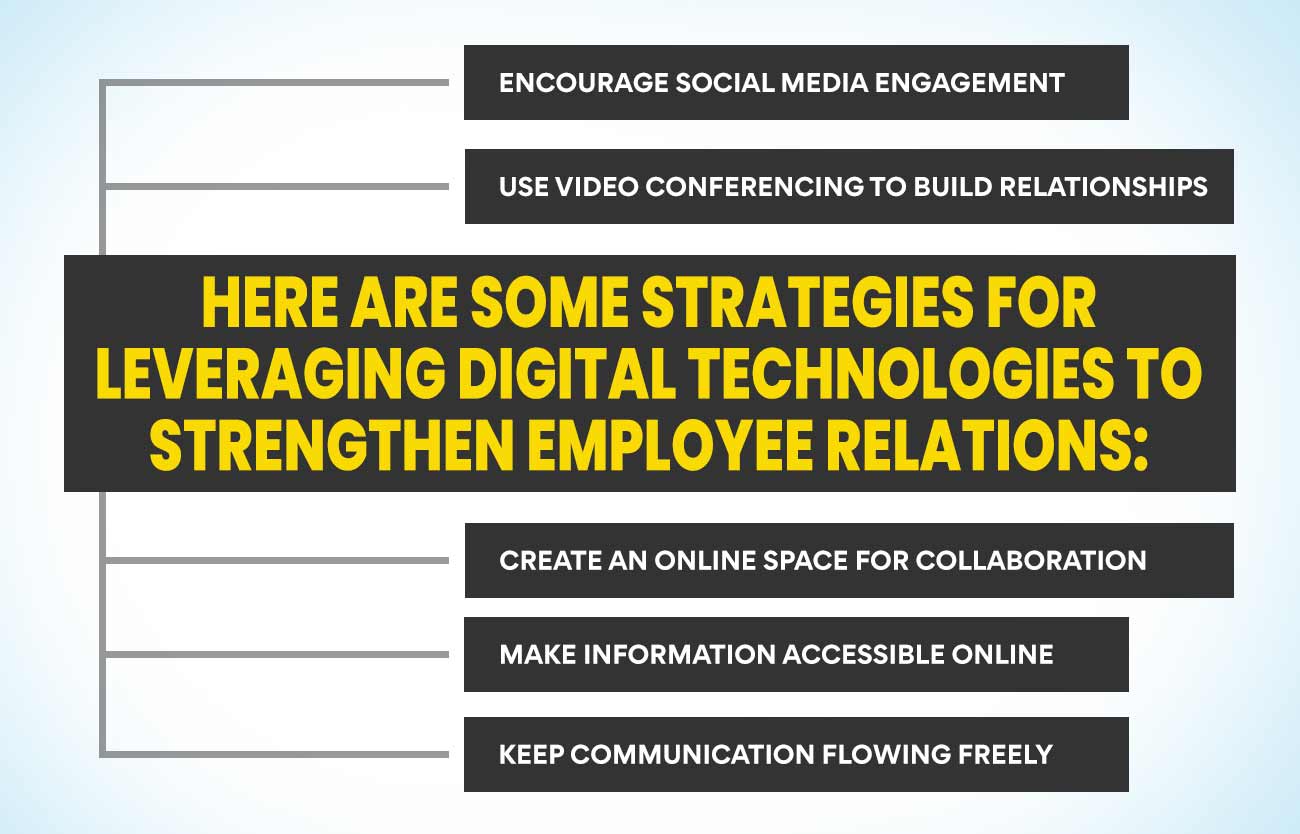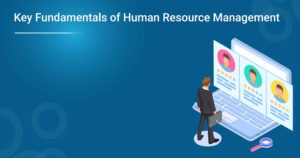Employee Engagement Strategies: Employee engagement is an integral part of any organisation’s success. It is a critical factor in employees’ overall well-being and helps foster positive relationships between an organisation and its staff. Employee engagement has been linked to higher productivity, better customer service, improved morale, and increased job satisfaction—all factors that can directly impact a business’s success.
But what are some of the best strategies for strengthening employee engagement? This blog post will delve into five effective strategies for strengthening employee engagement within your business. From recognising accomplishments to encouraging collaboration, these tactics will help you build stronger relationships with your team and boost company morale.
Encourage Constructive Feedback
When it comes to employee engagement, the most significant thing you can do is encourage constructive feedback. This means creating an environment where employees feel comfortable giving and receiving feedback and where there is mutual respect between coworkers.
There are some key things you can do to encourage constructive feedback:
- Make sure everyone is walking on the same track. Before giving or receiving feedback, ensure everyone understands the feedback’s purpose and expectations.
- Focus on the behaviour, not the person. When giving feedback, focus on the behaviour you want to change rather than attacking the person. For example, “I’ve noticed that you’ve been coming in late to work recently. Is there any particular reason? I’d appreciate it if you could try a little bit to be on time in the future.”
- Be specific. Make sure your feedback is specific, so the person knows exactly what they need to work on. Vague comments will not help anyone improve their performance.
- Encourage open communication. If someone is hesitant to give or receive feedback, encourage them to open up and explain why they feel this way. Often, people just need reassurance before they’re willing to engage in honest communication.
Also Read: Top 13 HR Interview Questions And Answers For Freshers
Give Them Welcoming Vibes From Day 1
The first step to boosting employee engagement is ensuring your new hires feel welcome on their first day. An outstanding way to do this is to have a designated person responsible for showing them around and getting them settled in. This can be a fellow employee or even a manager. Whoever it is, make sure they are friendly and informative. It’s also a good idea to give your new hire a tour of the office so they can get familiar with their surroundings.
Another way to ensure your new hires feel welcomed is to host a small reception on their first day. This can be something as simple as coffee and pastries in the morning or lunch if you want to go all out. This is a great opportunity for employees to mingle and know each other better. It’s also a nice way for management to show their appreciation for the new hire’s decision to join the company.
Finally, one of the best ways to engage your new hires from day one is to provide them with meaningful work that they can sink their teeth into. No one wants to feel like they’re just doing busy work, so make sure their projects are challenging yet achievable. This will help them feel like they’re contributing from day one and keep them engaged throughout their time with the company.
Employee engagement strategies: Embrace Digital Technologies
Digital technology has revolutionised the workplace, providing new ways for employees to connect, collaborate, and create. Here are some strategies for leveraging digital technologies to strengthen employee relations:
- Encourage social media engagement: Social media platforms like LinkedIn, Twitter, and Facebook provide great opportunities for employees to connect and share information about your company. Encourage employees to follow your company’s social media accounts and participate in online conversations.
- Use video conferencing to build relationships: Video conferencing can help employees feel more connected to each other, even if they’re working remotely. Use video conferencing for team meetings, one-on-one check-ins, or virtual happy hours.
- Create an online space for collaboration: Platforms like Google Docs and Slack make it easy for employees to work together on projects in real-time from anywhere in the world. Encourage employees to use these tools to collaborate on documents, presentations, and other work tasks.
- Make information accessible online: Employees should be able to easily find the information they need to do their jobs effectively. Put all important company information—policies, procedures, forms—online in a central location where it’s easy to access and search.
- Keep communication flowing freely: There’s no excuse for poor communication between managers and employees in the digital age. Make sure everyone is using the same.
Enhance Communication To Find The Flaws
If you want to strengthen employee relations, improving communication is one of the best things to do. Communicating more effectively allows you to find out what employees think and identify potential problems. Here are a few tips for enhancing communication in your organisation:
- Make sure employees feel comfortable communicating with management. Encourage an open-door policy and make it easy for employees to give feedback.
- Hold regular meetings to keep employees up-to-date on what’s happening in the company. This is also a good opportunity to solicit feedback from employees.
- Encourage employees to share their thoughts and ideas about the company using social media. This can help create a two-way dialogue between management and employees.
- Make sure there are channels for employee input when making decisions about the company. This could include setting up focus groups or survey committees.
- Implement an Employee Assistance Program (EAP) to provide confidential counselling and support for employees experiencing personal or work-related problems.
By taking these steps, you can create a more open and communicative environment in your organisation that will help to strengthen employee relations.
Employee engagement strategies: Conduct Training and Upskilling Programs
One of the best things for employee engagement is to invest in training and upskilling programs. Not only will this help your employees be more productive and effective, but it will also show them that you are invested in their development.
You can offer several different training and upskilling programs, so it’s important to find one that fits your company’s needs. Some common options include technical training, leadership development, or even offering courses on using new software or systems.
No matter what type of program you choose, ensure that it is well-designed and interactive, so your employees will get the most out of it. Additionally, try to offer programs relevant to your employees’ current roles and future goals so they can see the value in participating.
Also Read: How to become an HR manager? A complete career guide
Increase Transparency At All Levels
Transparency is one of the most important aspects of employee engagement and should be practised at all levels within an organisation. By being transparent with employees, leaders can build trust and credibility, which are essential for strong employee relations. When employees feel that they can trust their leaders and that their voices are heard, they are more likely to be involved and engrossed in their work and committed to the organisation.
There are many ways to increase transparency within an organisation. One way is to open communication channels so employees can easily share feedback and ideas. Leaders should also make themselves accessible to employees and encourage two-way dialogue. Furthermore, organisations should be clear about their goals and objectives so that employees understand how their work fits into the big picture.
Finally, regular performance reviews and goal-setting sessions provide opportunities for leaders to give honest feedback and help employees stay on track. By increasing transparency at all levels, organisations can create a more engaged workforce.
Employee engagement strategies: Provide Career Development Opportunities
Career development opportunities are key to engaging and retaining employees. You can create a more positive work environment and strengthen employee relations by providing opportunities for employees to grow and develop their skills.
Some ways to provide career development opportunities include:
- Offering training and development programs
- Encouraging employees to pursue further education
- Creating mentorship programs
- Providing opportunities for cross-training
- Giving employees a chance to lead projects or teams
By offering these types of opportunities, you can show your employees that you invest in their growth and development. This will help Engage them in their work and strengthen your employee relations.
Establish An Employees Relations Team
Building strong employee relations takes more than a happy hour and a company picnic. You need to be proactive and possess a strategy to create and maintain positive employee interactions. Here are some tips for establishing an employee relations team:
- Define the purpose of the team.
- Select team members who are good communicators and have strong interpersonal skills.
- Set up regular meetings to discuss issues and brainstorm solutions.
- Encourage open communication by creating an anonymous suggestion box or holding town hall meetings.
- Reward employees for their efforts with recognition programs and other incentives.
Following these tips can create a positive work environment where employees feel valued and respected.
Empower Them By Giving Decision-Making Authority
Empowering employees by giving them decision-making authority is one way to strengthen employee relations. Employees who feel empowered are seen to be engaged in their work. When employees have a say in decisions that affect their work, they are more likely to be committed to their job and motivated to do their best.
Giving employees decision-making authority does not mean giving them complete control over their work. It means allowing them to provide input on decisions and providing them with the resources they need to make informed decisions.
Some ways to empower employees include:
- Encouraging employees to communicate their ideas and suggestions for improvement
- Allowing employees to shape their job tasks and roles
- Involving employees in team meetings and discussions
- Allowing employees to take ownership of projects or tasks
- Providing resources for employees to make informed decisions on their own
When employees are empowered with decision-making authority, they feel respected and valued. This can improve morale and job satisfaction, resulting in increased productivity and engagement. Ultimately, when employers empower their employees, everyone wins.
Bring The Work Stress Down
It’s no secret that work stress can hurt our health, mood, and productivity. But what can we do to reduce the stress we feel at work? Here are some strategies that can help:
- Take breaks throughout the day.
- Set limits on how much work you take home with you.
- Find ways to laugh and have fun at work.
- Connect with coworkers outside of work.
- Make time for yourself outside of work.
Employee engagement strategies: Concentrate More on Mental Well-being
Mental well-being is a key part of any successful organisation. Employees who are healthy and content are more likely to work together harmoniously, be productive and have positive relationships with one another. Focusing on mental well-being can also help enhance employee engagement, loyalty and morale. Organisations should provide resources such as access to counselling services, stress management programs, health education initiatives and social activities that promote team building.
Additionally, employers should create an environment where employees feel comfortable speaking up about their mental health needs without fear of judgment or criticism from their coworkers or supervisors. By focusing on the importance of mental well-being in the workplace, organisations can foster healthier relations among their employees, leading to greater job satisfaction for everyone involved.
There are several ways employers can support mental well-being in the workplace:
- Encourage open communication about mental health.
- Provide access to mental health resources and support.
- Promote a healthy work-life balance.
- Foster a culture of respect and inclusion.
- Address stressors in the workplace.
- Support employees who are struggling with mental health issues.
Resolve Issues At The Earliest
Happy employees lead to a successful company no matter what business you’re in. When employees are engaged, they’re more productive and more likely to stick around. They’re also less likely to call in sick, meaning that your company can continue to run smoothly.
You can use many strategies to strengthen employee relations and keep your team engaged. Some of the top strategies include:

- Encourage open communication: Ensure your employees feel comfortable communicating with you and their coworkers. Encourage them to share their ideas and concerns openly.
- Show appreciation: A little appreciation goes a long way. Show your employees that you value their hard work by thanking them regularly, both publicly and privately. You could also offer incentives for a job well done.
- Foster a team environment: Help your employees feel like they’re part of a team by creating opportunities to work together on projects. You could also hold regular team-building activities or outings.
- Provide development opportunities: Employees who feel like they’re learning and growing are more engaged than those who don’t see any opportunity for advancement. Offer training and development programs that challenge your employees and help them achieve their full potential.
- Be flexible: Employees appreciate flexible employers with hours, working from home and other requests. This shows that you understand that everyone has different needs and that you
Make Data-based Decisions
To make data-based decisions when it comes to employee engagement, employers need first to collect data about their employees. This can be done through surveys, questionnaires, interviews, and focus groups. Once data has been collected, employers need to analyse it to identify patterns and trends.
After identifying patterns and trends, employers can then develop strategies for improving employee engagement. Some common strategies include providing more opportunities for employees to give feedback, increasing communication between employees and managers, and offering more training and development opportunities.
Establish a Safe And Friendly Workspace
A safe and friendly workspace is essential for strong employee relations. Here are some strategies to establish such an environment:

- Promote a culture of safety and respect: Make sure your policies and procedures reflect these values and are communicated to all employees.
- Encourage open communication: Create an environment where employees feel comfortable exchanging their ideas and concerns.
- Foster a sense of community: Help employees feel connected and invested in the company’s success.
- Recognise and encourage teamwork: Reward team efforts and promote employee collaboration.
- Promote work-life balance: Help employees maintain a healthy balance between work and personal lives.
Conclusion
Employee engagement strategies are essential for any successful business. By investing in these strategies, businesses can develop stronger relationships with their employees, which leads to increased productivity and morale. We have provided you with some of the top employee engagement strategies that you can use to improve your workplace culture and create an environment of respect and inclusion. Implementing even just a few of these will help strengthen employee relations in no time!
If you’re looking to gain a comprehensive understanding of Human Resource Management, then our Post Graduate Certificate in Human Resource Management is the perfect choice for you! With this certificate course, you’ll learn cutting-edge strategies and best practices related to employee relations. You’ll also have an opportunity to explore the various facets of HR, such as recruitment, training & development, compensation & benefits, performance management and more.
The program provides hands-on learning experiences that will equip you with the skills necessary to become a successful HR professional in today’s competitive workplace environment. Enrol now and take your career to the next level!
More Information:
10 Organisational Behaviour Challenges That Are Making Your Business Critical!
What Is The Meaning Of Strategic Direction In HRM ?




























